History of The Nerd: The Rise and Fall and Rise of Star Trek PART 1
I’ve been holding my breath for the arrival of the latest Star Trek movie by JJ Abrams. I’ve been holding my breath because Star Trek is my most favorite thing in the whole entirety of the world. The rest of Geekdom could keep their lightsabers and I’ll take a phaser set on stun. Well as Eric Banna’s Nero would say in the commercials, “The wait is over”. I saw Star Trek and my eyes ejaculated tears of joy. No really, I actually cried at a Star Trek movie. These were not tears moved by some emotional plot point, though I had a few of those as well; no, these were tears of awe, sentimentality, and of course joy that my favorite franchise was finally treated with love and respect. The studios had always treated Star Trek, for the most part, like the attention starved slutty girl in high school you shamefully used whenever you were bored. (She had feelings you know!) Whenever Paramount needed a little financial nutting they called upon good ol’ reliable Star Trek and made a movie on the cheap. Thank the heavens for J.J. Abrams because after their last attempt at a movie, the under whelming Star Trek: Nemesis and their last show, the appalling Enterprise, the world thought that Star Trek was officially dead. The world shouldn’t have ruled it out because, since its inception, Star Trek as a franchise had lived the cycle of death and rebirth over and over again like the rise and fall of the mighty phoenix (you are officially reading Geekscape).


At the not-so-young age of 43, Gene Roddenberry secured a three-development deal with the top independent television producer at the time Desilu (founded by Lucille Ball, a redheaded comedian superstar and Desi Arnez, a wife beater.) In the very beginning Star Trek already felt destined for failure. The Star Trek idea was offered to CBS who turned it down for the more family friendly and honky-approved Lost in Space.

NBC was interested in a show with colorful backgrounds to take full advantage of the new color television sensation sweeping the nation. They ordered a pilot from Desilu and then dismissed it on the grounds that it was “too cerebral”.
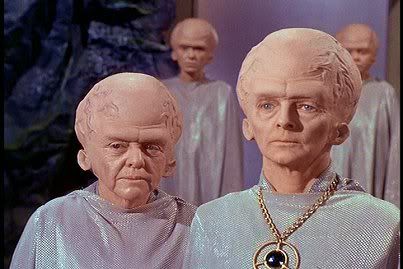
Star Trek’s original pilot The Cage was shot on 1964. The cast was completely different from the classic Star Trek we know and love today. It starred Jeffery Hunter as Captain Pike, had a female first officer known only as Number One played by Majel Barrett and an entire cast of all-white faces. It did have everybody’s favorite Vulcan, Spock, but he was strangely excitable, shouting out every line he had. NBC executives hated it. They said it was “too slow”, “too intellectual” and “not enough action”. Also it tested poorly with housewives who couldn’t see out of their own “cage” to see that in the future women could perform in a command position. They mainly thought, “Just who does she think she is telling those men to do things?” Also they thought Spock looked too demonic, which is funny because Spock was going to be painted red until someone thought it was a little too much. Usually at this point a show concept would be canned, but NBC decided to order another pilot instead — an unprecedented move, and a rare one, even today.
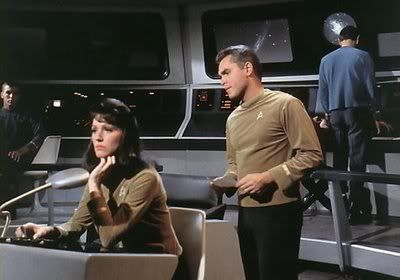
Gene always believed in liberal ideas that in the future humanity would finally be rid of racism and sexism. Bold ideas for a white man living during the time when Martin Luther King was fighting for basic human rights in a divided South. When NBC ordered another pilot with changes for Star Trek he must have thought to himself that if he couldn’t get a female first officer, then maybe he could sneak in a gaggle of colored people.
Star Trek’s second pilot had a completely revamped cast that included Captain Kirk who boldly wanted to explore new orifices, Urhura a black hottie Communications Officer, a Japanese Helmsman Zulu, a Scottish Engineer Scottie and Russian Navigator Chekov. The only two returning actors from the first pilot were, Leonard Nimoy would reprise his role as Spock, who Roddenberry fought tooth and nail for and Majel Barrett would perform in a new role as Head Nurse Chapel, who Roddenberry just wanted to nail. As far as liberal agendas go, I think Gene Roddenberry won on the deal. The new pilot was more exciting, sexy, and colorful in more ways than one. How could they fail? Well, a bad rating would be one way.
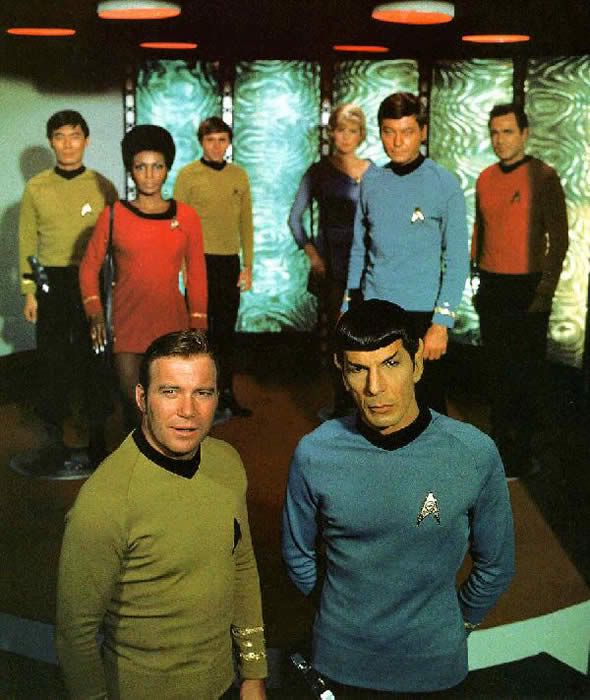
Star Trek aired in 1966 to lackluster ratings and even less shinny advertising revenue. Even before it could lurch to the end of the first season NBC was calling for the axe to be dropped because of low Nielsen ratings. So what happened? Why didn’t Star Trek fall to the wayside like so many other failed TV series? We all owe thanks to a loveable redhead. Lucille Ball single handedly prevented Star Trek from being stricken from the airwaves. Now that the show was saved everyone could breathe a sign of relief. That is, until the end of season two.
NBC executives began tying a noose for the crew of the Enterprise once again as season two headed to a close. By this point Lucille Ball sold Desilu to Paramount and no longer had any weight with the networks. If it wasn’t for the power of major nerdom there would had never been a third season of Star Trek or any movies or any spin offs –if it wasn’t for Bjo Trimble and her husband, John Griffin Trimble, there would have been nothing. In 1968 NBC announced that Star Trek would, boldly, be cancelled. The two of them set out and started the now famous “Save Star Trek” letter writing campaign that saved the series for a third season. This may sound simple enough, but we have to remember that this was in the days in the long, long ago before the Internet. They did this all through regular-ass mail. They dug up mailing lists from science fiction conventions, book dealers and the Paramount mailing room to get addresses. They mailed letters out to fans to ask them to write a letter to the studios and to ask ten more friends to do the same. It worked very much like a chain letter that was used for the forces of good instead of for cursing people to never know laughter. This caught the executives’ attention and Star Trek was born again. Later Bjo and John would use this very same technique to change the first space shuttle’s name to “Enterprise”.
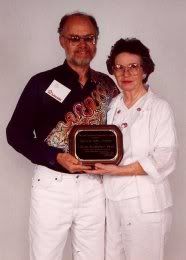
The original series was allowed to sail the interstellar seas once again, but with a slashed budget and the show time moved to the Friday night death sloth at 10pm. The network did their best to bury the show. As the season crawled to a close another letter campaign tried to defibrillate the dying show once again, but this time they were ignored. Also ignored were the marketing personel that believed the cancellation of the show was too damned soon. They discovered that there was something called “demographics” which made the Star Trek audience highly desirable to the advertisers therefore making it a valuable franchise. This warning came too late and the series finally met its doom.
Thankfully, the show at least lasted for three seasons. If it hadn’t it would have just been shelved and future generations would not have been able to see it, as they did, in syndication. There were of course fans of the show when it aired, but Star Trek really found the success it should have had in syndication. For the first time fans were calling themselves “Trekkies” and were holding homebrewed conventions. The high ratings in syndications and fevered dedication of the fan base actually made Paramount take notice and actually regret canceling the little show that could. The pressure from fans and the dripping saliva of monitary greed was too much for the studio to over look. How can they feed the hunger for Star Trek, but not spend any real money? How about a limitedly animated cartoon? This was the start of Paramount milking the fans, but low-balling the franchise, a tradition that would last for decades.
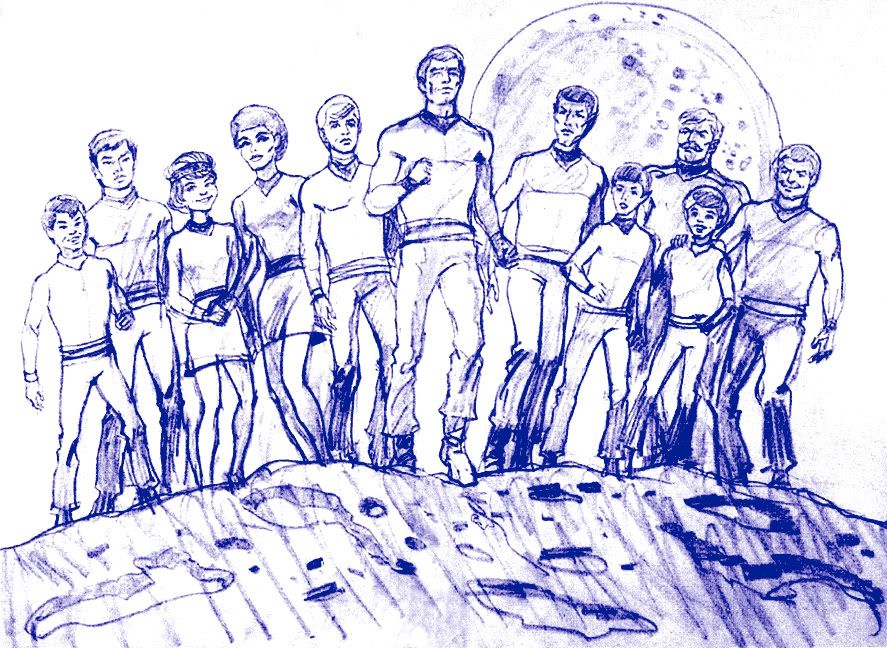
Star Trek: The Animated Series ran for two seasons from 1973 to 1974 and was produced by Filmation in association with Paramount Television. Originally Filmation wanted to do a kiddy version of Star Trek where all the roles were replaced with cadets. Gene Roddenberry’s blood boiled over at the thought of it. Paramount even tried to bribe Gene with a large sum of money for him to abandon creative control so they could make Baby Trek, but Gene, ever the paragon of virtue, flatly refused. The freedom of an animated series was that special effects were only limited by imagination. The crew of the Enterprise could encounter aliens that actually look alien instead of looking like a dark skinned person wearing buckskin. In spite of this, the show was plagued with quality issues. Filmation was, and still is, best known for crude drawings that barely moved, recycling stock footage, and random mistakes. Because of all this Roddenberry forced Paramount to stop considering the series as canon.

In 1978, Paramount was prepared to launch a fourth network television station and wanted to use Star Trek as the flag ship show titled Star Trek: Phase II. Most of the crew would return with the exception of Leonard Nimoy as Spock because of legal issues or because he had a stick up his ass. Sets were built, new actors were hired to expand the cast, footage was shot and then Star Wars destroyed all plans for a new show. Star Wars was such a financial juggernaut that Paramount wanted their own space movie and wondered what properties they owned that was similar. This put brakes on Phase II, but gave birth to the Star Trek movie franchise.
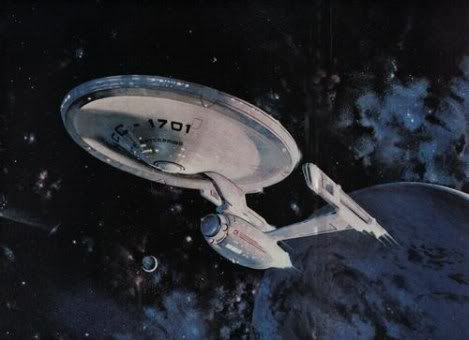
READ IT HERE: THE RISE AND FALL AND RISE OF STAR TREK PART 2: THE MOVIES AND SPIN OFFS!
